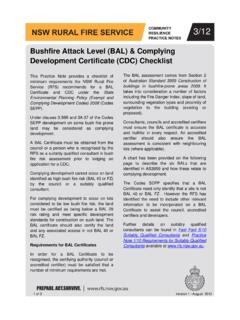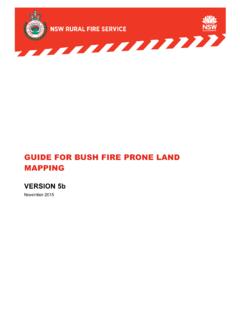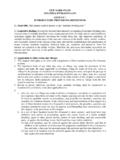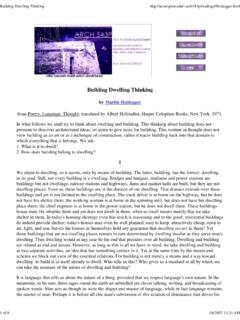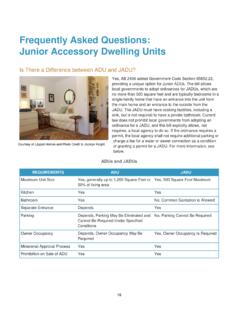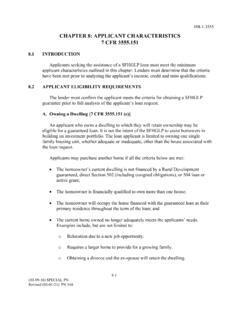Transcription of BUILDING IN BUSH FIRE PRONE AREAS SINGLE DWELLING ...
1 BUILDING IN BUSH FIRE PRONE AREASSINGLE DWELLING APPLICATION KIT23 NSW RURAL FIRE SERVICE SINGLE DWELLING APPLICATION KITThis kit will assist people BUILDING a new house or altering or adding to an existing BUILDING on bush fire PRONE land. Not all councils will accept the SINGLE DWELLING application kit so check with your local council before proceeding. If the requirements in this kit cannot be met then a performance based solution may be needed and a suitably qualified bush fire consultant may be able to kit provides applicants with a streamlined approach to meeting the requirements of "Planning for Bush Fire Protection 2019 (PBP 2019)". It has been developed to assist applicants in providing information in support of a development application so that compliance with PBP can be assessed and documented as kit takes you through each step in the bush fire assessment process and explains how to complete the Bush Fire Assessment Report (BFAR) which will need to accompany your Development Application (DA).
2 This document is intended for use only where the proposed development are on existing land having a DWELLING entitlement and where no new infrastructure for example roads and hydrant systems are required. Where the intention is to increase the residential density of a site like dual occupancies, multiple dwellings, boarding homes, workers cottages and any other similar proposals, a bush fire assessment report may be required for existing development. Furthermore, it is intended for use only where the bush fire assessment is straightforward from a vegetation classification and slope calculations being considered. For other situations, the services of a suitably qualified bush fire consultant should be Copyright 2019 held by the NSW Rural Fire Service.
3 Apart from any use permitted under the Copyright Act 1968, no part may be reproduced by any process without prior written permission from the NSW Rural Fire : Any representation, statement opinion, or advice expressed or implied in this publication is made in good faith on the basis that the State of New South Wales, the NSW Rural Fire Service, its agents and employees are not liable (whether by reason of negligence, lack of care or otherwise) to any person for any damage or loss whatsoever which has occurred or may occur in relation to that person taking or not taking (as the case may be) action in respect of any representation, statement or advice referred to by NSW Rural Fire Service April 2020 Revised version April 2020 PLANNING FOR BUSH FIRE PROTECTIONA guide for councils, planners, fire authorities and developersNOVEMBER 2019 Fig 1.
4 RFS publication Planning for Bush Fire Protection RURAL FIRE SERVICE SINGLE DWELLING APPLICATION KIT SECTION 1 4 Who should use this Kit .. 4 Legislative context and submission requirements .. 4 Determining if your property is on bush fire PRONE land? .. 4 How to use this kit .. 4 Design Principles for BUILDING on Bush Fire PRONE Land .. 4 PART A .. 5 Property Details .. 5 PART B .. 5 Type of Proposal .. 5 PART C .. 5 Determining Construction Levels Required (Bush Fire Attack Levels, or BAL) .. 5 Classification of Vegetation Formations Chart .. 6 NSW Local Government AREAS Fire Danger Index .. 9 PART D .. 14 Flame Zone .. 14 PART E .. 14 Water Supplies.
5 14 Water Requirements: .. 14 PART F .. 16 Gas Supplies .. 16 PART G .. 16 Access .. 16 PART H .. 17 Asset Protection Zones .. 17 Dictionary .. 18 SECTION 2 19 Bush Fire Assessment Report .. 19 PART A: Property details .. 19 PART B: Type of proposal .. 19 PART C: Bush fire attack and level of construction .. 20 PART D: Flame zone .. 23 PART E: Water supplies .. 23 PART F: Gas supplies .. 24 Part G: Access .. 24 Contents45 NSW RURAL FIRE SERVICE SINGLE DWELLING APPLICATION KITWho should use this KitThis kit is intended to be used to provide the relevant consent authority with the information needed so that they can assess your proposed development in accordance with the EP&A Act section kit will assist people BUILDING a new house or altering or adding to an existing BUILDING on bush fire PRONE land.
6 Not all councils will accept the SINGLE DWELLING application kit so check with your local council before proceeding. If the requirements in this kit cannot be met then a performance based solution may be needed and a suitably qualified bush fire consultant may be able to context and submission requirements The NSW Rural Fire Service (NSW RFS) has, under the Rural Fires Act 1997, a statutory obligation to protect life, property and the environment through fire suppression and fire prevention. In response to devastating losses in past bush fires, the NSW Government enacted legislative changes to ensure bush fire matters are considered in the development process. Section of the Environmental Planning and Assessment Act 1979 which all new development on bush fire PRONE land to comply with PBP 2019.
7 This kit is intended to provide you with a method for assessing compliance with PBP 2019 for new BUILDING and for alterations and additions to existing Applications (DA) on bush fire PRONE land must be accompanied by a Bush Fire Assessment Report (BFAR) which explains how compliance with PBP 2019 is to be achieved. The BFAR which is contained in the pullout section of this kit must address the following: a statement that the site is on bush fire PRONE land (BFPL); the location, extent and vegetation formation of any bushland on or within 140 metres of the site; the slope under the vegetation hazard for each aspect using the steepest slope within 100 metres of the site; any features on or adjoining the site that may mitigate the impact of a bush fire on the proposed development; a statement assessing the likely environmental impact of any proposed bush fire protection measures (BPMs) and associated works.
8 A site plan showing access, water supplies, asset protection zone (APZ) requirements, bush fire attack level (BAL) and BUILDING footprints in relation to the bush fire hazards. Determining if your property is on bush fire PRONE land? To determine if your proposed development is on bush fire PRONE land you will need to check with your local council or use the BFPL Tool on the NSW RFS website Planning law in NSW requires new development on bush fire PRONE land to comply with the provisions of PBP to use this KitThe Kit will take you through each step in the bush fire assessment process and help you describe the site characteristics required to complete this assessment.
9 The assessment will give you the BAL for your property and will guide you in determining the appropriate BPMs that are required for your proposed complete the pull-out BFAR (Section 2) you should work through the bush fire assessment. Details regarding what construction materials and designs are required for each BAL are contained within AS3959-2018 Construction of buildings in bushfire- PRONE AREAS (AS3959-2018). Further information on bush fire protection requirements can be found in PBP 2019 which is available on the NSW RFS Principles for BUILDING on Bush Fire PRONE LandThe design of a BUILDING can be enhanced to reduce the effects of bush fire attack by: providing ember protection and BUILDING away from the flame zone; avoiding BUILDING on ridge tops and saddles; BUILDING on level ground wherever possible; BUILDING on cut-in benches rather than elevated AREAS ; avoiding raised floors, utilise concrete slabs; locating habitable buildings near the property entrance for easier access/egress.
10 Section 145 NSW RURAL FIRE SERVICE SINGLE DWELLING APPLICATION KIT using non-combustible fencing and barriers ( courtyards, fenced off AREAS for gardens, BBQ AREAS and the like) to shield the BUILDING from the hazard; reducing the bulk of a BUILDING (height and width) facing a bush fire hazard; and simplifying the design of buildings to reduce the numbers of re-entrant AProperty Details In Section 2 (A), fill in the property details for the site or buildings you plan to develop. It is important to accurately identify your property to be developed. Your Statement of Environmental Effects which is generally included as a council requirement with your DA will often include a map showing the property location within the broader locality.



